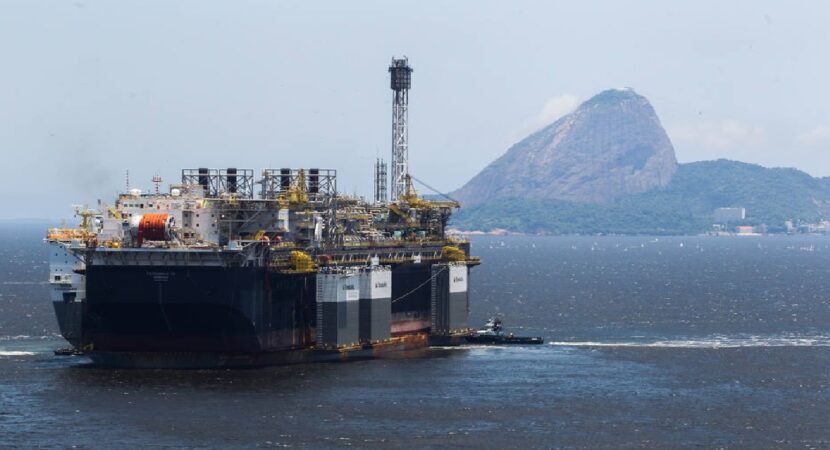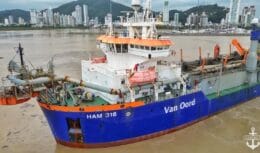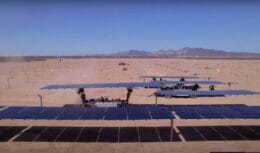
In January, offshore fields produced 97,2% of oil and 87,3% of natural gas. The fields operated by Petrobras were responsible for 94,1% of the oil and natural gas produced in Brazil.
According to the National Oil and Gas Agency (ANP), production in the pre-salt in January registered a record both in volume and in percentage of total production. 2,912 MMboe/d (million barrels of oil equivalent per day) were produced, of which 2,292 MMbbl/d (million barrels per day) of oil and 98,6 MMm3/d (millions of cubic meters per day) of natural gas, which corresponded to 74,7% of national production. There was an increase of 7,5% compared to the previous month and 10,7% compared to January 2021. Production came from 134 wells.
Read also
- Curriculum and work portfolio in hand tomorrow (15/03) to compete for the campaign for URGENT job vacancies for technicians, engineers and more, opened by the oil and gas company Infotec
- Multinational Aker Solutions recruits candidates without experience in the areas of Engineering, Maintenance, Quality, Projects, HR and more, in Rio de Janeiro and Paraná for internship and trainee vacancies
- Brazilian multinational Noxis Energy, controlled by Israeli capital, will invest more than BRL 1 billion in the construction of an oil refinery in the Industrial and Port Complex of Pecém, in Ceará
- SENAI offers 6.265 vacancies in free technical courses with certificates in the areas of technology, environment, management, economics and moreCanada starts record recruitment of Brazilians to fill hundreds of job openings; there is no age limit for applicants
According to the ANP, the main reasons for the increase in pre-salt production was the entry of wells into production, mainly in the Sépia and Sépia Leste fields.
Data on national production in January 2022 are available in the ANP's Monthly Oil and Natural Gas Production Bulletin, which provides detailed data on national production, IN THIS LINK.
They are also available, interactively, in the Dynamic Oil and Natural Gas Production Panels, which can be read, this link.
National oil production was 3,89 million barrels a day
The national production of oil and natural gas in January 2022 was 3,897 MMboe/d (million barrels of oil equivalent per day), 3,032 MMbbl/d of oil and 137 MMm3/d of natural gas. Oil production increased by 6,8% compared to the previous month and 5,6% compared to January 2021. In natural gas, there was an increase of 3,9% compared to December and 0,8% in comparison with the same month of the previous year.
Harnessing of natural gas
In January, the use of natural gas was 97,6%. 50,6 MMm³/day were made available to the market. Gas flaring in the month was 3,2 MMm³/d, a decrease of 2,9% compared to the previous month and an increase of 11,4% compared to the same month in 2021.
Origin of production
In January, offshore fields produced 97,2% of oil and 87,3% of natural gas. The fields operated by Petrobras were responsible for 94,1% of the oil and natural gas produced in Brazil.
Tupi oil field, in the Santos Basin pre-salt, was the largest oil and natural gas producer in January
In January, the Tupi field, in the Santos Basin pre-salt, was the largest producer of oil and natural gas, registering 893 MMbbl/d of oil and 42,5 MMm3/d of natural gas.
The Petrobras 77 platform, producing in the Búzios field through five interconnected wells, produced 161,953 Mbbl/d of oil and was the facility with the highest oil production.
The FPSO Cidade de Itaguaí facility, producing in the Tupi field, through 7 interconnected wells, produced 7,729 MMm³/d and was the facility with the highest natural gas production.
Estreito, in the Potiguar Basin, had the highest number of onshore producing wells: 953.
Tupi, in the Santos Basin, was the offshore field with the highest number of producing wells: 61.
These fields produced 370,5 boe/d, of which 142,1 bbl/d of oil and 36,3 Mm³/d of natural gas. The Iraí field, operated by Petroborn, was the biggest producer, with 213,4 boe/d.
Oil production occurred by 41 companies in 6.177 wells, 491 offshore and 5.686 onshore
In January 2022, 272 areas granted, four areas of transfer of rights and six of sharing, operated by 41 companies, were responsible for national production. Of these, 63 are offshore and 219 are onshore, 12 of which are related to contracts for areas containing marginal accumulations. Production took place in 6.177 wells, 491 offshore and 5.686 onshore.
The average API degree of oil extracted in Brazil was 28,2, with 2,3% of production considered light oil (>=31°API), 92,2% medium oil (>=22 API and <31 API) and 5,5% heavy oil (<22 API).
The onshore mature basins (fields/long-term tests in the Espírito Santo, Potiguar, Recôncavo, Sergipe and Alagoas basins) produced 91,183 Mboe/d, of which 70,878 Mbbl/d of oil and 3,2 MMm³/d of natural gas. Of this total, 50,9 thousand boe/d were produced by Petrobras and 40,2 thousand boe/d were produced by concessions not operated by Petrobras, of which: 19.165 boe/d in Rio Grande do Norte, 16.167 boe/d in Bahia , 3.598 boe/d in Alagoas, 1.132 boe/d in Espírito Santo and 166 boe/d in Sergipe.












